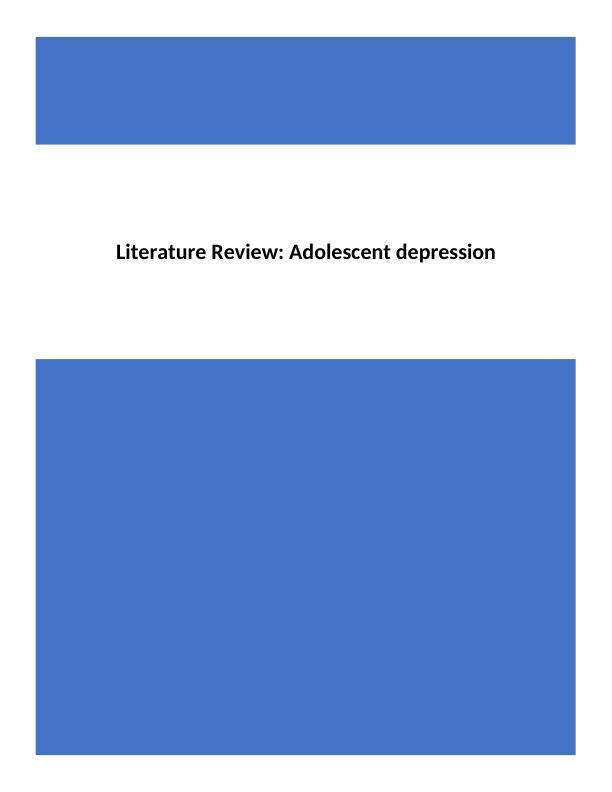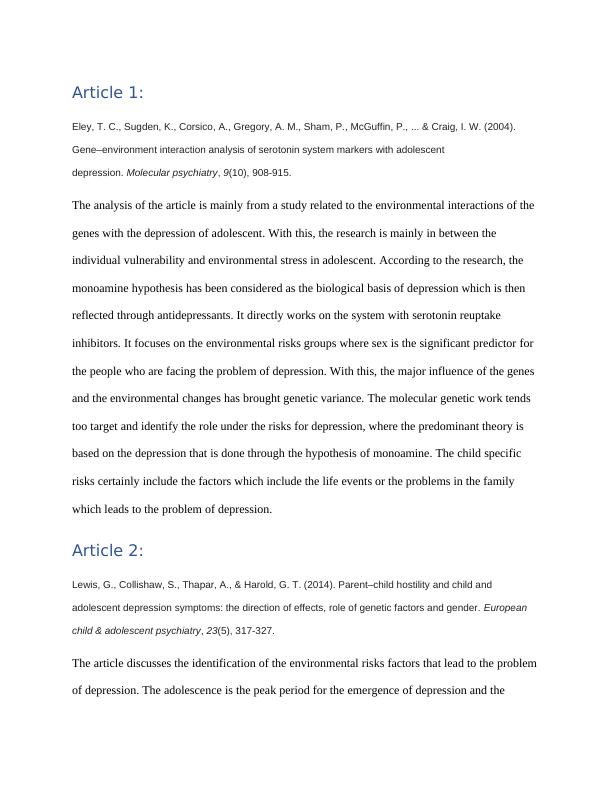Gene Environment Interaction Analysis of Serotonin System
6 Pages1258 Words48 Views
Added on 2020-05-28
Gene Environment Interaction Analysis of Serotonin System
Added on 2020-05-28
ShareRelated Documents
End of preview
Want to access all the pages? Upload your documents or become a member.
Impact of Social Environment on Mental Health of Children 5 Years and Under
|3
|527
|406
Cognitive Behaviour Therapy PDF
|5
|974
|265
Screening for Symptoms of Postpartum Traumatic Stress in Mothers with Preterm Infants
|10
|8203
|134
Psychometric Properties of the Screen for Child Anxiety Related Emotional Disorders (SCARED) in a Non-Clinical Sample of Children and Adolescents in Saudi Arabia
|4
|527
|123



